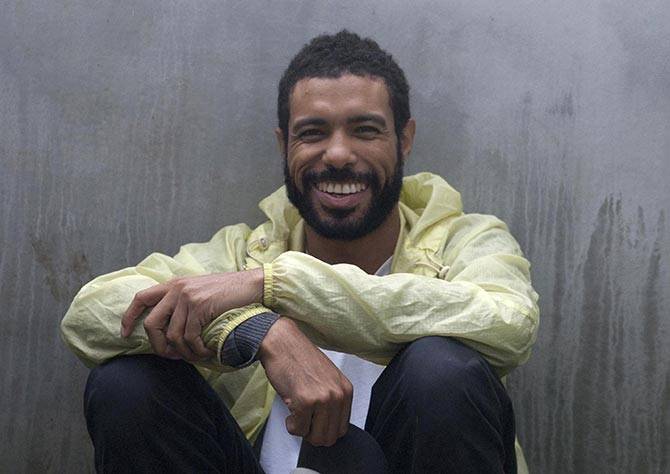Ballet class, semiotics at university, P.A.R.T.S. dance school, rap, grunge…so many things were going on during the coming of age of the New York-born, Brussels-based choreographer Andros Zins-Browne, that he is now able to let camels dance in the Moroccan desert.

Input <> Output: Andros Zins-Browne
Atlas Insights
In February, Andros Zins-Browne will present the performance Atlas Revisited, which he made with Karthik Pandian, at Kaaitheater. But the performance also resulted in some thematic and multidisciplinary by-products that will be presented during three free evenings in November at the Kaaistudios. "Atlas is a huge film studio in the middle of the Moroccan desert with all these film sets of old Hollywood productions. Karthik and I were there for another project, talking about different subjects like the dance of Merce Cunningham, the end of the Arab Spring, and pictures Karthik had taken of the camels there. We were also talking about freedom and images of freedom. About how an artist can create an image of freedom that correlates with how a society or a political system proposes, or in many cases imposes, freedom. All this brought us to the absurd but seemingly logical idea to try and get the camels to dance Merce Cunningham. [Laughs] Atlas Revisited looks back on what we did there, and the Atlas Insights-nights with video, performances, and talks deal with related subjects, such as the role of cell phone footage in recent socio-political developments, the question if and how animals can perform and behave politically, or the ways in which politics has become increasingly virtual."
Corgan's water bottle
"If you ask me about what influences were important to my development as a choreographer, I would first have to mention the music I listened to when growing up. Late 1980s, early 1990s rap – groups like Public Enemy, N.W.A, KRS-One – and grunge: Nirvana, Sonic Youth, Smashing Pumpkins… Somewhere in a box in New York I must still have Billy Corgan's water bottle that I caught during a concert. It was the highlight of my youth. [Laughs] From those artists I learned a lot about resistance and independence. About doing things differently from anyone else. Today I am still strategising to maintain that rebellious spirit."
Real but not actual
"Just at a moment when I was thinking of dropping out of dance, it was really crucial to get to know the works of 1960s performance artists like Vito Acconci, Marina Abramovic, or Chris Burden. That whole school of body and performance art served as an eye-opener for the fact that the body could be used as a tool to communicate ideas, andnot only forms and shapes. I was also influenced by conceptual choreographers like Jérôme Bel or Xavier Le Roy, who dealt with the body as artificial material. I am interested in working with the body as virtual material as a way of dealing with our world of smoke screens. The virtual is real but it is not actual, just like our world is real but not actual, and Trump is a real politician, but not an actual politician."
Radical teacher
"When I was in high school, I was lucky to have this dance programme that was totally radical. We would spend the whole weekend improvising and making pieces, and had the chance to work on one piece for a whole year, with proper lighting, costumes, etc. And my teacher Randy Sloan was the kind of teacher everybody hopefully encounters at least once in their school career; she was a radical and loved working with young people. She taught me that what you dance should be reproducible in some way. If it is not, it is like dancing at a party, which is also fine but it is not a choreography."
Cooperation
"My collaborators are also of enormous importance to me. I don't come to my projects expecting my collaborators to execute my ideas. I ask them to work as fellow artists who provide feedback. For example, in the case of Atlas Revisited I went on a long journey with visual artist Karthik Pandian. Whether I am working with performers, visual artists, or sound designers, I've always seen the projects as a context in which we do our work together. That does not mean the working structure is not hierarchical – because in a way it is – but our project is a conversation about the topic. That is why looking at my work, you could say I come to very different results."
> Atlas Insights: the revolution will be televised. 8/11, 20.30, Kaaistudio's
Fijn dat je wil reageren. Wie reageert, gaat akkoord met onze huisregels. Hoe reageren via Disqus? Een woordje uitleg.